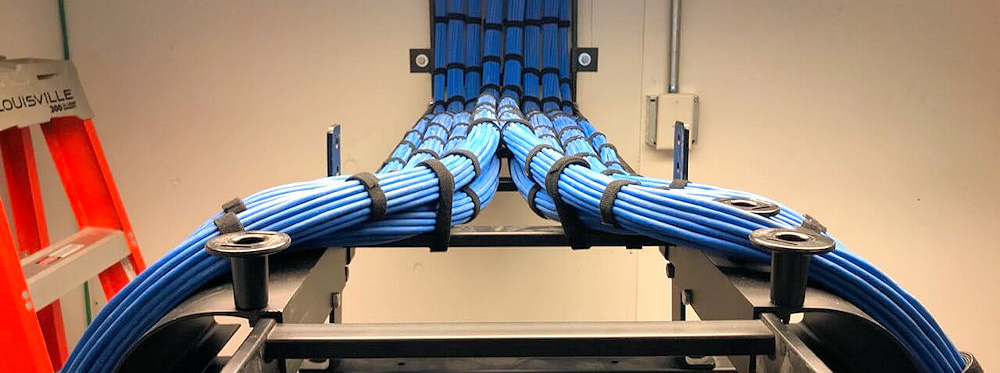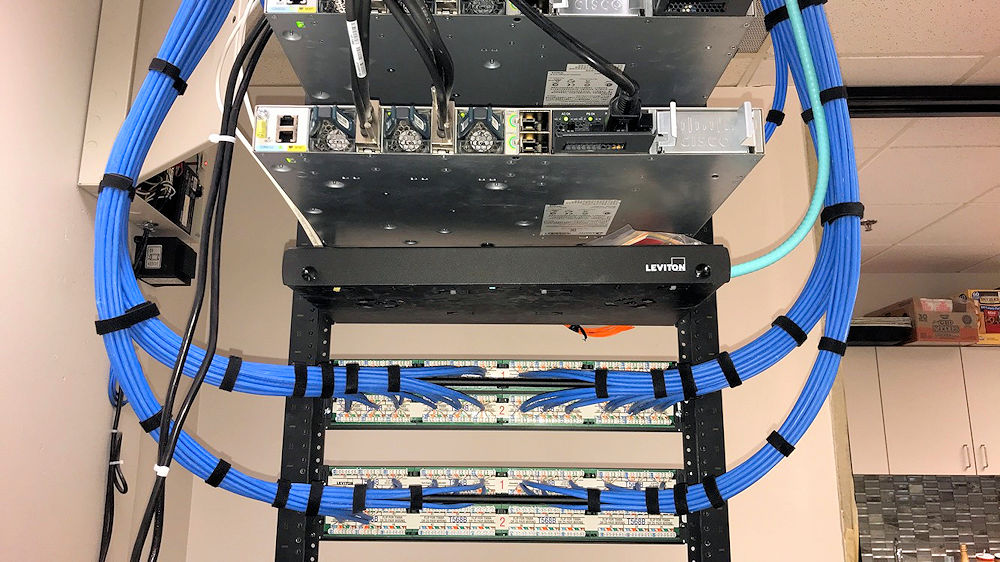Structured Cabling Vendors
What is structured cabling system?
Subsystems are components of a cabling system that work together to provide the necessary connections between devices. The six subsystems of a structured cabling system are backbone, distribution, wiring, collector, interface and management. Backbone cables connect the distribution boxes and interfaces in the system. Distribution cables distribute the information collected by the devices throughout the building or network. Wiring cables carry the electrical signals from one device to another. Collector cables bundle together a group of wiring cables and take the signals away from the Network. Interface cables connect different types of devices together and allow for easy access to data and device settings. Management systems oversee and control aspects of a structured cabling system.

What are the benefits of structured cabling?
Structured cabling is a networking term used to describe the use of cables that have been specially designed to reduce signal interference. By being routed in predetermined patterns, structured cabling can help to ensure appropriate signal transmission. Structured cabling is an optical fiber installation methodology that uses bundles of fiber optic cables to transport signals within closed spaces, such as buildings. The types of structured cabling include twisted pair, CAT-5, and CAT-6.
Neighborhoods We Service
We've provided Structured Cabling & Data Cabling to our clients in Dallas, Tx starting in 2006. From Tx State Hwy 75 to I635 and I30 / I20, we've helped friends in neighborhoods like:
Dallas Downtown Historic District - Deep Ellum - Far North Dallas - Uptown - South Dallas - Bishop Arts District - Lake Highlands - West Dallas - Arts District - Preston Hollow
Gladly Providing Service To The Amazing Texas Town of Dallas
Our Dallas Office
Find Us On The Web!
Call us today to get going with your FREE Structured Cabling Analysis & Quote by calling us direct (number listed below) or visit us online. Give us a call: (214) 251-5237 Site: https://shelbycommunications.com Shelby Communications - 1505 Denise CT, Keller, TX 76248
What is structured cabling and give its types?
Shelby Communications LLC is a cabling company located in the Dallas, TX area. We offer a variety of cabling services, including network cable installation, network cable maintenance, and network cabling repairs. We also provide compatible cabling products and accessories, so you can easily upgrade your network infrastructure. Whether you need help getting started with networking or need basic repairs completed, we're here to help. Contact us today to learn more about our services.


What are the six subsystems of a structured cabling system?
Structured cabling is based on the following principles: Use standardized wiring and components; organize cables into categories that correspond to their function; and install cables in a predetermined sequence. A structured cabling system is a network wiring system that includes distinct components, such as the cables, connectors and systems. The organization and placement of cables is done to reduce noise and RF interference, and to prevent unauthorized usage.
Does structured cabling is recommended for all Organization Why?
The components of a structured cabling system are the hubs, switches, and cabling. The hubs hold the switches, and each switch connects to one or more cables. The cabling is typically fiber-optic cable, and it runs throughout the facility. A properly structured cabling system can provide many benefits including: improved reliability, greater performance and efficiency, easier installation and reduced management costs. Structured cabling is a layout of electrical cables in a specific fashion for purposes such as increasing reliability and throughput. This type of cabling typically uses smaller cable sizes and pairs them together in rows or columns to maximize connection ability.


What is a TIA standard?
Shelby Communications LLC provides a wide range of services to customers in the Dallas region. The company is in business since 1997. They offer a variety of services and products related to cabling. Structured Cabling Dallas provides a range of services including network installation, consulting and repairs. This company has a wealth of knowledge about cabling systems, and can help customers make the most of their networks.
What are the six cabling subsystems?
Structured cabling is the process of connecting computers, peripherals, and telecommunications equipment using compliant cabling systems. Different types of cabling can be used to organize these assets into intelligent networks. LANs use coaxial cables, while WANs employ twisted-pair copper wires.

What is a backbone cable?
The backbone is the portion of the network cabling which connects across the various rooms and communication panels, carrying the largest number of fibres and normally constituting the longest cable run. Example backbone includes DeviceNet Thick cable.
What is structured cabling and give its types?
In telecommunications, structured cabling is building or campus cabling infrastructure that consists of a number of standardized smaller elements (hence structured) called subsystems. Structured cabling components include twisted pair and optical cabling, patch panels and patch cables.
What are the six subsystems of a structured cabling system?
The Six Subsystems of a Structured Cabling System Entrance Facilities (EF) ... Equipment Room (ER) ... Backbone Cabling. ... Telecommunications Room (TR) and Telecommunications Enclosure (TE) ... Horizontal Cabling – (Cabling Subsystem 1) ... Work Area.
Is structured cabling low voltage?
While lamps and appliances require that standard voltage to run consistently and reliably, much of your home's network and communication wiring is low voltage and the infrastructure of low voltage wiring is also known as structured cabling.
What is the purpose of structured cabling?
Structured cabling is a type of infrastructure that supports the performance of an organisation's cabling system or network. It is the glue that binds all PCs, phones and other devices used within the business together – providing a reliable and versatile solution to a wide range of communication requirements.
Which standard is also known as structured cabling?
Which standard is also known as structured cabling? Definition. TIA/EIA Commercial Wiring Standard.